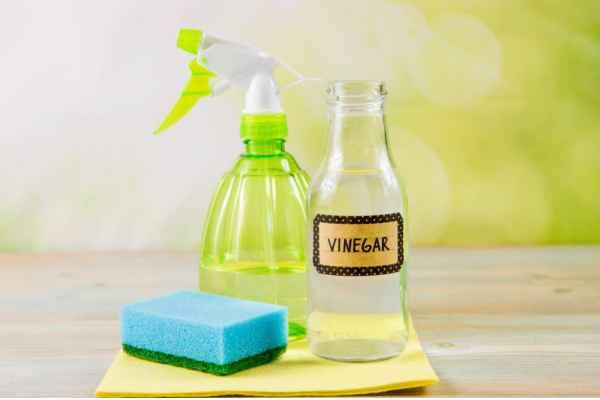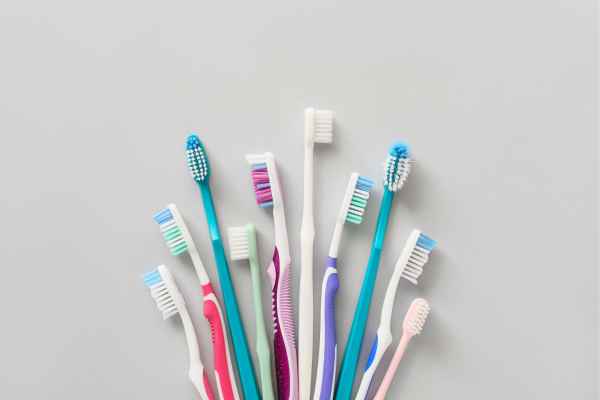Creating a welcoming and spotless kitchen environment starts with maintaining the elegance and durability of your wood cabinets. These charming fixtures in your home are not only functional but also add a warm, natural aesthetic to your space. However, wood cabinets require special care to keep them looking their best. In this blog, we’ll explore effective and gentle methods to clean wood cabinets, ensuring they remain a beautiful and enduring part of your kitchen. From selecting the right cleaning solutions to understanding the nuances of different wood finishes, we’ll guide you through the steps to preserve the charm and longevity of your cabinets.
Importance of How To Clean Wood Cabinets
Preserves Cabinet Quality
Regular cleaning of wood cabinets is crucial for maintaining their integrity and appearance. Wood, being a natural material, is prone to damage from grease, moisture, and grime. Cleaning them regularly helps preserve the wood’s quality, preventing warping, discoloration, and deterioration over time.
Enhances Kitchen Aesthetics
Clean wood cabinets contribute significantly to the overall look of your kitchen. Accumulated grease and dirt can make even the most beautiful cabinets look dull and unkempt. Regular cleaning keeps the wood looking fresh and vibrant, thereby enhancing the aesthetic appeal of your kitchen space.
Promotes Hygiene and Health
Kitchens are prone to bacteria and mold growth due to moisture and food residues. Greasy cabinets can attract pests and become a breeding ground for germs. By cleaning your timber cabinets regularly, you promote a hygienic environment, reducing the risk of contamination and ensuring a healthier space for food preparation.
Increases Longevity
The life span of wood cabinets is significantly extended through proper care and cleaning. Neglecting to clean them regularly can lead to permanent damage, requiring costly repairs or replacements. Regular cleaning is a preventative measure that helps avoid such expenses, ensuring the cabinets last for many years.
Improves Home Value
Well-maintained wood cabinets can be a selling point for your home. They reflect the overall care taken in maintaining the property. Clean and well-preserved cabinets contribute to a positive impression of your home, potentially increasing its market value and appeal to prospective buyers.
Here Are Some Ideas How To Clean Wood Cabinets
Vinegar and Water Solution

Cleaning wood cabinets can be a breeze with a simple vinegar and water solution. This natural cleaning solution is perfect for gently removing grime and maintaining the integrity of the wood. To make it, mix equal parts of white vinegar and warm water. The acidity of the vinegar works effectively to cut through grease and buildup without harming the wood’s finish. Apply the solution with a soft cloth, wiping in the direction of the wood grain to avoid scratches. This method is particularly effective for regular maintenance cleaning and is eco-friendly, ensuring your cabinets remain pristine and chemical-free.
Mild Dish Soap Solution

For a gentle yet effective cleaning option, a mild dish soap solution can be your go-to method. Dilute a few drops of mild dish soap in warm water to create a sudsy mixture. This solution is excellent for tackling everyday dirt and spills on your timber cabinets. The soap cuts through grease and grime without being too harsh on the wood’s surface. Use a soft, damp cloth to apply the solution, and then wipe the cabinets with a dry cloth to prevent water damage. This method is safe for most wood finishes and is ideal for frequent use.
Baking Soda Paste

When dealing with tougher stains or built-up grime, a baking soda paste can be a powerful cleaning agent. Mix baking soda with a little water to form a paste. This non-abrasive cleaner is perfect for targeting specific areas without scratching or damaging the wood. Apply the paste to the stained area and let it sit for a few minutes. Then, gently scrub with a soft, damp cloth, focusing on the problematic area. This method is particularly useful for removing water rings, food stains, and other stubborn marks that regular cleaners can’t tackle.
Oil Soap Wood Cleaner
Oil soap wood cleaners are specially formulated to clean and protect wood surfaces. These cleaners are ideal for deeply cleaning and conditioning your wood cabinets, bringing out their natural beauty and luster. They effectively remove dirt, grease, and residue while nourishing the wood. Apply the cleaner according to the manufacturer’s instructions, usually with a damp cloth, and then wipe dry. This method is best for occasional deep cleaning and can help restore the appearance of older or dull cabinets.
Microfiber Cloths

Microfiber cloths are an essential tool for cleaning wood cabinets. Their soft, non-abrasive texture makes them perfect for applying cleaning solutions and wiping down surfaces without leaving scratches. They are highly effective at trapping dirt and dust, ensuring a thorough clean. When using microfiber cloths, it’s best to use a separate cloth for applying the cleaner and another for drying, to avoid spreading dirt. These cloths are reusable and can be washed for repeated use, making them an eco-friendly and cost-effective option for your cleaning routine.
Toothbrush for Crevices

A toothbrush can be an invaluable tool for reaching the tight crevices and corners of timber cabinets. Its small size and stiff bristles make it perfect for dislodging dirt and grime that accumulate in these hard-to-reach areas. Dip the toothbrush in your chosen cleaning solution, whether it’s a vinegar mix or soapy water, and gently scrub the nooks and crannies. This method ensures a comprehensive clean, addressing areas that larger cloths can’t easily access. It’s especially useful for detailed or intricate cabinet designs, where dirt tends to hide.
Lemon Oil Polish

Lemon oil polish is an excellent choice for both cleaning and enhancing the natural beauty of wood cabinets. The natural lemon oil works to gently clean the surface while leaving a vibrant, glossy finish. It also helps in conditioning the wood, preventing it from drying out and cracking. Apply a small amount of lemon oil polish with a clean cloth, working in the direction of the grain. This method not only cleans but also leaves a pleasant, fresh lemon scent, rejuvenating your kitchen space.
Magic Eraser
For those stubborn stains and scuff marks that don’t seem to budge, a Magic Eraser can be a game-changer. It’s a type of melamine foam that acts like a fine abrasive, lifting away tough stains without the need for harsh chemicals. Dampen the Magic Eraser and gently rub over the affected area. It’s particularly effective on sticky residues, crayon marks, and other difficult stains. However, use it with caution on glossy or delicate finishes, as it can dull the shine if used too aggressively.
Orange Oil Cleaner

Orange oil cleaner is another natural option that’s effective for cleaning and revitalizing wood cabinets. The natural orange oil is excellent for cutting through grease and grime while leaving a pleasant citrus scent. It also conditions the wood, preventing it from drying out. Apply the orange oil cleaner with a soft cloth and buff it into the wood for a natural, streak-free shine. This method is ideal for routine cleaning and can help maintain the natural beauty of your cabinets.
Mineral Spirits for Heavy Grime
For extremely heavy grime or sticky residues that other cleaners can’t remove, mineral spirits can be the solution. It’s a mild solvent that can effectively dissolve tough grime without damaging the wood finish. Apply mineral spirits with a clean, soft cloth, working in a well-ventilated area. It’s particularly useful for cleaning cabinets that haven’t been cleaned for a long time or for removing residues like old adhesives or paint splatters. After using mineral spirits, it’s important to go over the area with a damp cloth to remove any solvent residue and then dry with a clean cloth.
The Final Thought
Clean your wood cabinets is an essential part of maintaining a pristine and inviting kitchen. By following the simple yet effective steps we’ve discussed, you can ensure that your cabinets remain as beautiful and functional as the day they were installed. Remember, the key is to be gentle and consistent in your cleaning routine. Using the right cleaners, being mindful of the wood’s finish, and tackling spills immediately can make a difference. Your kitchen is the heart of your home, and with these tips, your wood cabinets will continue to contribute to its warmth and charm.
